Beginner’s Guide to Composting: Easy Steps to Enrich Your Garden
- February 27, 2024
- 4 comment
Composting is a natural process that turns organic waste into a rich soil amendment known as compost. It’s an excellent way to recycle kitchen scraps and yard waste, turning what might otherwise be trash into treasure for gardeners. Composting not only enriches the soil, helping retain moisture and suppress plant diseases and pests but also reduces the need for chemical fertilizers and decreases methane emissions from landfills.
What is Composting?
At its core, composting is a form of recycling. Instead of sending organic waste to landfills, where it would release methane a potent greenhouse gas as it decomposes anaerobically (without oxygen), composting decomposes this waste aerobically (with oxygen). This not only reduces greenhouse gas emissions but also results in the production of compost, which is excellent for improving soil structure, moisture retention, and nutrient content.

Composting involves mixing organic ‘green’ materials, which are rich in nitrogen (such as kitchen scraps and fresh lawn clippings), with ‘brown’ materials, which are rich in carbon (such as dry leaves, straw, and shredded cardboard), in a balanced ratio. Proper moisture and aeration are essential for the microorganisms to efficiently break down the materials into compost.
Importance of Composting
Composting offers a myriad of environmental benefits, starting with the significant reduction of waste. By redirecting organic materials away from landfills, composting not only lessens the volume of waste but also mitigates the environmental impacts associated with traditional disposal methods. This process conserves valuable landfill space and supports more sustainable waste management practices. Additionally, composting plays a vital role in soil health. The conversion of organic waste into a nutrient-rich compost enriches the soil with essential nutrients, enhancing its fertility and structure. This improvement in soil quality makes it more conducive to plant growth and supports a wider range of agricultural activities, ultimately contributing to more productive and sustainable farming practices.
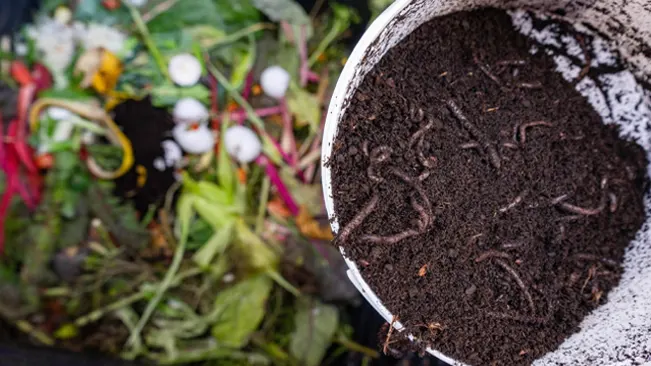
Water conservation and the reduction of greenhouse gases are other significant benefits of composting. The ability of compost to retain moisture reduces the need for frequent watering, a boon especially in arid regions or during drought conditions. Moreover, composting is an aerobic process that dramatically reduces methane emissions associated with anaerobic decomposition in landfills, thereby contributing to climate change mitigation. Composting also promotes a vibrant soil ecosystem, supporting a diverse range of life from microorganisms to worms and insects. This biodiversity is essential for healthy soil, which in turn, supports robust plant growth. Furthermore, compost serves as an excellent natural alternative to chemical fertilizers, providing plants with essential nutrients without the associated risks of chemical runoff and pollution. This not only helps in maintaining an ecological balance but also encourages organic and eco-friendly farming practices. In essence, composting is a holistic practice that addresses waste management, enhances soil health, conserves water, reduces greenhouse gas emissions, promotes biodiversity, and offers a sustainable alternative to chemical fertilizers. Its role in fostering a sustainable future and healthier environments is indeed invaluable.
Materials Needed for Composting
Green Materials (Nitrogen-rich)
- Kitchen Scraps: Vegetable peels, fruit cores, and other plant-based kitchen waste. Avoid meats, dairy, and oils.
- Grass Clippings: Freshly cut grass is an excellent source of nitrogen and heats up the pile quickly.
- Coffee Grounds: Used coffee grounds add nitrogen and are readily available.
- Green Leafy Yard Waste: Fresh plant and garden trimmings can be included.
Brown Materials (Carbon-rich)
- Cardboard: Non-glossy, tape and sticker-free cardboard should be shredded or torn into smaller pieces to increase surface area for decomposition.
- Newspaper: Plain, non-glossy newspapers can be shredded and added to the pile.
- Sawdust: If it’s from untreated wood, sawdust can be a great addition due to its high surface area.
- Dry Leaves: Fallen leaves, preferably shredded, are an excellent carbon source.
Things to Avoid
- Glossy or Coated Paper: These do not break down easily and may contain harmful chemicals.
- Meats, Dairy, and Oily Foods: These can attract pests and lead to unpleasant odors.
Types of Composting
Hot Composting
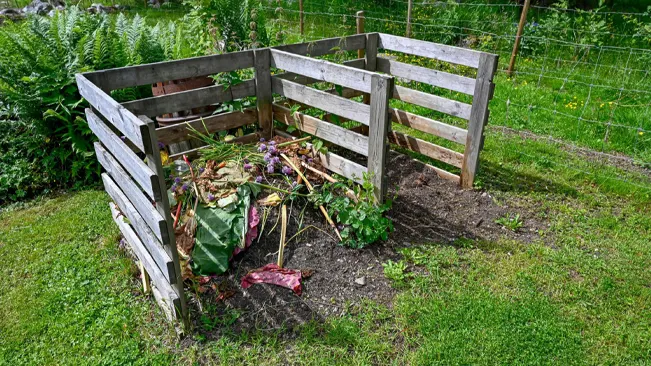
Hot composting is an accelerated composting technique that requires active management, including regular turning and monitoring of the compost pile to maintain high temperatures (between 130-160°F). These conditions promote rapid decomposition of organic materials by thermophilic bacteria and fungi. The high temperatures also help to kill weed seeds and pathogens, making the resulting compost safe and nutrient-rich. This method can produce compost in as little as a few weeks to a few months, depending on the balance of materials, pile size, and environmental conditions.
Cold Composting
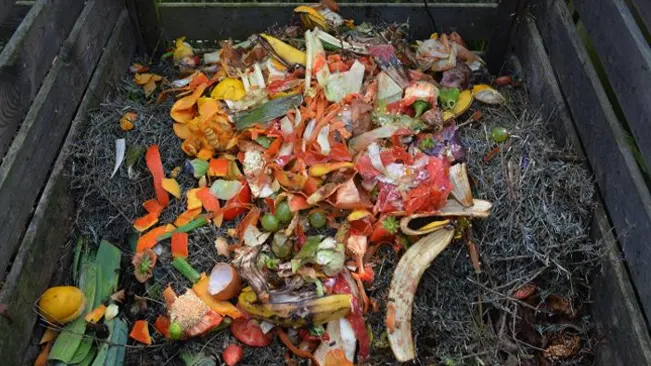
Cold composting is a more passive approach to composting, requiring less frequent maintenance. This method involves simply piling up organic waste and letting it decompose over time. The process is driven by mesophilic microorganisms that operate at lower temperatures compared to their thermophilic counterparts in hot composting. Cold composting takes longer, often a year or more, and does not generate enough heat to kill off weed seeds and pathogens effectively. However, it is less labor-intensive and still results in a nutrient-rich compost.
Vermicomposting
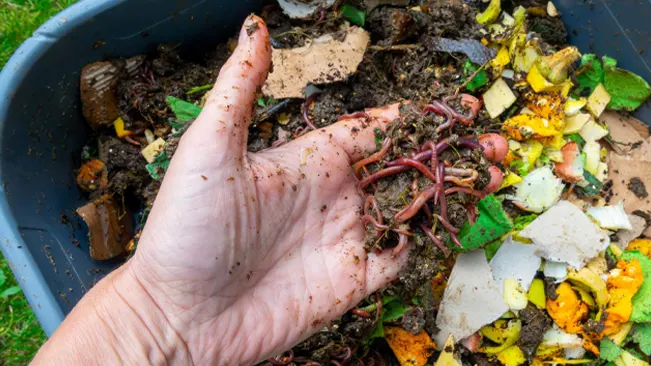
Vermicomposting utilizes specific species of worms, such as red wigglers, to decompose organic waste. This method is particularly effective for processing food scraps and can be done indoors or outdoors in contained systems. The worms consume the organic matter, and their castings (worm poop) create a highly nutritious compost. Vermicomposting is efficient, odorless when properly maintained, and produces compost relatively quickly, often within 3 to 6 months. It’s an excellent option for small-scale composting or for those without the space for larger compost piles.
Steps to Start Composting
Step 1: Choose a Composting Site
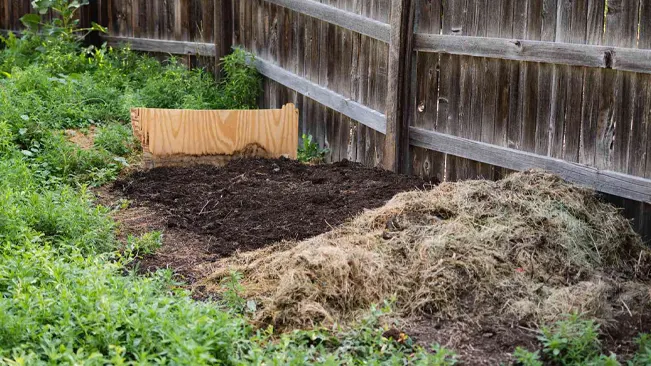
When choosing a site for composting, it’s essential to pick a location that is both convenient and suitable for the process. Ideally, the site should be in a well-drained area of your garden to prevent waterlogging and ensure good aeration of the compost pile. Accessibility is key; you’ll want the site to be easily reachable for adding materials and turning the pile, but it should also be situated far enough away from your living spaces to avoid any inconvenience from potential odors. If possible, placing your compost pile directly on the soil can be very beneficial. This direct contact with the earth allows worms and other beneficial microorganisms to access the pile easily, aiding in the decomposition process and enriching the compost with a diverse microbial ecosystem.
Step 2: Gather Your Materials
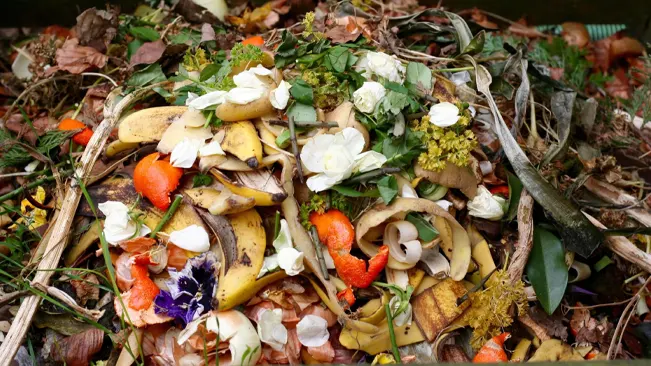
For successful composting, gathering the right mix of materials is crucial. Your compost pile should consist of both green and brown materials to maintain a balanced nutrient profile. Green materials, which are nitrogen-rich, include items such as kitchen scraps (fruit and vegetable peels), fresh grass clippings, and coffee grounds. These components are essential for feeding the microorganisms that break down the compost. On the other hand, brown materials provide the necessary carbon content and include items like cardboard, dry leaves, and sawdust. These materials help to add structure to the pile, allowing air to circulate and preventing the compost from becoming too wet and smelly. The combination of these two types of materials ensures that your compost pile has the right balance of nutrients and physical properties to decompose effectively and transform into nutrient-rich soil.
Step 3: Build Your Compost Pile
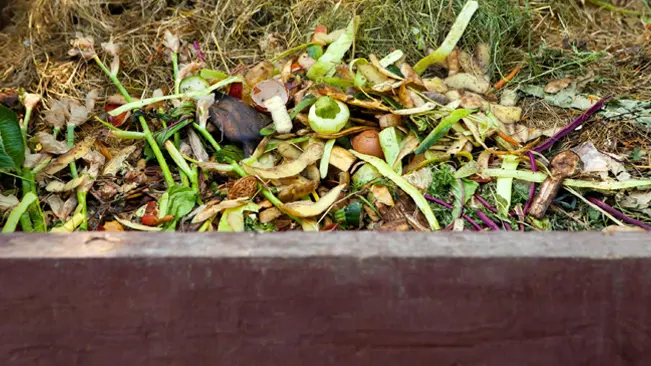
To build your compost pile, begin by laying down a base layer of brown materials, such as dry leaves or shredded cardboard, to absorb excess moisture and facilitate air circulation. This foundation is crucial for preventing your compost from becoming too soggy. Next, add a layer of green materials, like kitchen scraps or grass clippings, to introduce nitrogen, which is essential for the composting process. After adding each layer, lightly sprinkle water over it to maintain moisture without causing waterlogging; the compost should have the dampness of a wrung-out sponge. Continue this process, alternating between green and brown materials, until your pile reaches a height of 3-4 feet. It’s important to maintain a rough ratio of 3 parts brown to 1 part green by volume to ensure a balanced compost that decomposes efficiently. This layered structure encourages the breakdown of materials, turning your waste into valuable compost over time.
Step 4: Maintain Your Compost Pile
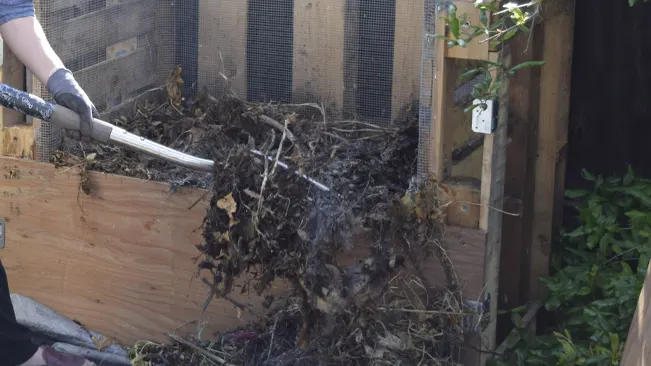
Maintaining your compost pile is crucial for efficient decomposition. Regularly, about every week or two, it’s important to turn the pile using a garden fork. This action involves bringing the materials from the outside to the center of the pile, which introduces air and accelerates the composting process. Additionally, keeping an eye on the moisture level of your compost is essential, particularly during dry spells. The compost should retain a certain level of moisture to facilitate the breakdown of materials; it should feel moist but not saturated. If the pile seems dry, adding water can help restore the necessary moisture. Conversely, if the compost appears too wet, incorporating more brown materials, such as dry leaves or straw, can absorb the excess moisture and restore balance to the compost’s environment.
Step 5: Monitor the Composting Process
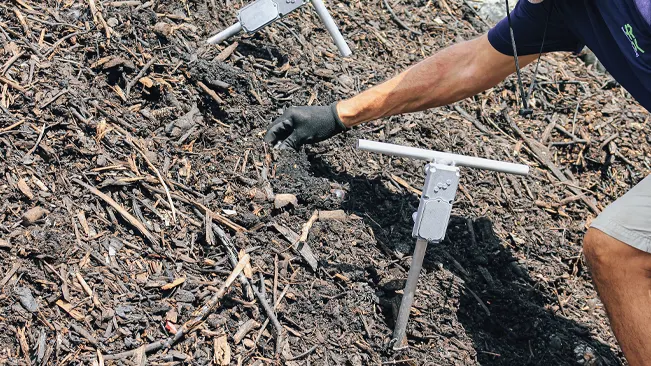
Monitoring the composting process is a key step to ensure its success. A well-maintained compost pile will generate heat in its center, a clear indication that the decomposition process is actively underway. This heat is essential as it signifies the breakdown of organic materials by microbial activity. If you notice that your pile isn’t heating up, it might be lacking in green materials, which provide the necessary nitrogen for microbial growth, or it might need more water to maintain the moisture that microbes require to thrive. Over time, as the composting process continues, you’ll observe that the materials within the pile gradually decompose, leading to a reduction in the pile’s overall size. This shrinkage is a natural part of the composting process and a positive sign that your compost is progressing towards maturity.
Step 6: Harvesting Your Compost
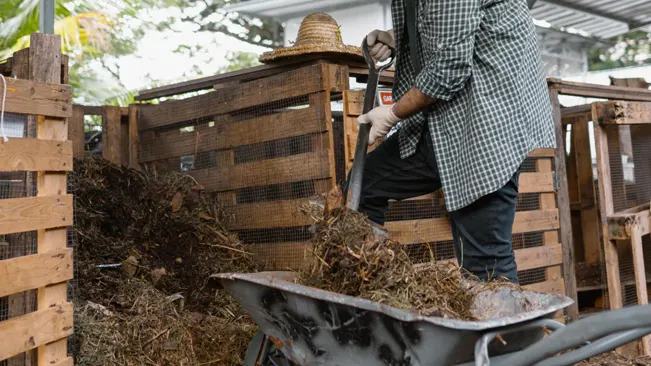
Harvesting your compost marks the final step in the composting journey. The maturity of compost is evident when it transforms into a dark, crumbly substance with a pleasant earthy smell, indicating it’s ripe for use. This maturation process varies in duration, typically ranging from a few months to a full year, heavily dependent on various environmental and management conditions. Once matured, the compost is ready to enrich your garden, serving multiple purposes such as a potent soil conditioner, a nutritious mulch layer, or as a vital component in your potting mix, thereby closing the loop in your organic waste recycling endeavor.
Tips for Successful Composting
- Balance Your Browns and Greens: Maintain a good mix of brown (carbon-rich) and green (nitrogen-rich) materials to ensure your compost pile decomposes efficiently. A general guideline is to aim for a ratio of about 3:1, browns to greens.
- Chop or Shred Larger Items: Breaking down larger pieces of organic matter into smaller pieces can speed up the composting process by increasing the surface area for microbes to work on.
- Keep the Pile Moist: Your compost pile should be moist like a wrung-out sponge. If it’s too dry, add water; if it’s too wet, add more brown materials to absorb excess moisture.
- Turn the Pile Regularly: Aerating your pile by turning it every week or two helps introduce oxygen, which is crucial for the composting process and helps prevent odors and pests.
- Monitor the Temperature: A healthy compost pile will generate heat. If your pile isn’t warming up, it may need more green materials, water, or aeration.
- Avoid Composting Meat and Dairy: These materials can attract pests and create odors. Stick to plant-based scraps and yard waste.
- Use a Compost Bin if Necessary: If you’re concerned about animals or need to keep your yard tidy, a compost bin can be a great solution.
- Layer Your Pile: Start with a layer of coarse brown material, like twigs or straw, to enhance drainage and aeration at the bottom of your pile.
- Bury Food Scraps: To avoid pests and odors, bury your kitchen scraps in the center of the pile under a layer of browns.
- Be Patient: Composting is a natural process that can take anywhere from a few months to over a year. The time it takes depends on the materials you use, the weather, and how frequently you turn the pile.
Troubleshooting Common Composting Problems
Managing moisture levels is crucial for a healthy composting process. Compost that is too wet can lead to anaerobic conditions, slowing down the decomposition and potentially causing foul odors. To remedy a waterlogged compost pile, incorporating more brown materials like dry leaves, straw, or shredded paper can absorb the excess moisture and help reintroduce air pockets. Additionally, frequent turning of the pile can aid in aerating and drying it out. On the other hand, compost that is too dry hampers the decomposition process. To address this, lightly watering the pile to achieve the consistency of a wrung-out sponge can be beneficial. Incorporating more green materials, which naturally contain more moisture, can also help maintain the ideal moisture level in the compost.
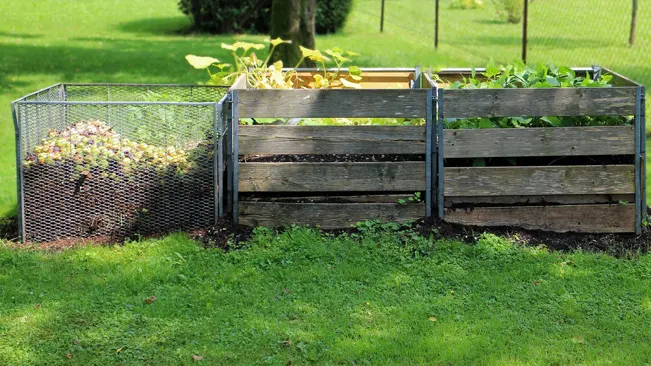
A compost pile that fails to heat up might be lacking in nitrogen, moisture, or proper aeration, essential components for the composting process. Ensuring a balanced mix of green (nitrogen-rich) and brown (carbon-rich) materials can address this issue. If the compost is too dry, adding water can help, and if it’s deficient in nitrogen, incorporating more green materials like kitchen scraps or grass clippings can provide a boost. Regularly turning the pile can introduce the necessary oxygen to kickstart the microbial activity, leading to a heating up of the compost pile, which is a sign of effective decomposition. Foul odors and pests are common issues that can arise in composting but can be effectively managed with proper practices. Bad smells often indicate anaerobic decomposition, which can be mitigated by turning the pile to introduce air and adding more brown materials to balance out the moisture levels. To avoid attracting pests such as rodents and insects, it’s important to maintain a well-balanced compost and refrain from adding materials like meat, dairy, fats, and sugary foods. Using a compost bin with a lid can also help deter pests, and burying food scraps deep within the pile, along with regular turning and moisture management, can further discourage unwanted visitors, ensuring a healthy and efficient composting process.
Conclusion
In conclusion, successful composting hinges on maintaining the right balance of materials, moisture, and aeration in the compost pile. Issues such as excessive wetness or dryness, lack of heat generation, unpleasant odors, and pests can all be effectively managed with the appropriate techniques. By ensuring a balanced mix of green and brown materials, adjusting moisture levels as needed, and regularly turning the pile to introduce oxygen, composters can create an optimal environment for decomposition. Additionally, by avoiding the inclusion of inappropriate materials like meats and dairy products and employing a compost bin with a lid, one can prevent odors and deter pests. With these practices in place, composting can be a straightforward and rewarding process that enriches the soil and contributes to a sustainable garden ecosystem.
FAQs
1. What can I put in my compost pile?
You can add green materials like fruit and vegetable scraps, coffee grounds, and grass clippings, and brown materials such as dry leaves, cardboard, and straw. Avoid adding meat, dairy, fats, and diseased plants.
2. Why is my compost pile not heating up?
A lack of heat usually indicates insufficient nitrogen, moisture, or aeration. Try adding more green materials, moistening the pile, or turning it to introduce air.
3. How often should I turn my compost pile?
Turning your pile every 1-2 weeks can help maintain proper aeration and speed up the decomposition process.
4. Can I compost in the winter?
Yes, composting can continue in winter, though the process may slow down. Keep adding to your pile and insulate it if possible to retain heat.
5. How do I know when my compost is ready?
Finished compost is dark, crumbly, and has an earthy smell. It typically takes a few months to a year to fully mature.
6. How can I prevent pests in my compost?
Keep your compost balanced with the right mix of greens and browns, avoid adding meat or dairy, and consider using a compost bin with a lid.
7. Is it okay if my compost pile gets wet in the rain?
Rain can moisten your pile, which is beneficial, but too much water can lead to anaerobic conditions. Cover your pile during heavy rains if it becomes too soggy.
8. Can I add weeds to my compost?
Yes, but be cautious with weeds that have gone to seed, as they might not get hot enough in the pile to kill the seeds and could spread when the compost is used.
9. Why does my compost smell bad?
Bad odors are usually a sign of anaerobic decomposition due to excess moisture or lack of air. Turn your pile and add more browns to correct this.
10. Can I compost paper and cardboard?
Yes, non-glossy paper and cardboard are excellent brown materials for composting. Shred them for faster decomposition.

Joel Cunningham
Forestry AuthorI'm Joel Cunningham, an expert in pruning and weed management with over a decade of experience. My skills are rooted in formal training and extensive practice, focusing on advanced pruning techniques and efficient weed control. I'm known for my quality work, precision, and deep understanding of plant health and soil dynamics. My contributions extend to educational initiatives where I share sustainable practices and advice, establishing myself as a reliable and authoritative figure in the gardening community.
4 comments
Excellent topics regarding composite . I'm keen in gardening. I have a large mango 🥭 tree I want to prulling( cut) for better fruit. Please suggest me how can I do.
Mohammad Aslam
March 3, 2024 2:45 amPruning your mango tree is best done after the harvest season to improve fruit yield and tree health. Use clean, sharp tools to remove dead or diseased branches, those that cross over others, or grow inward, to enhance air circulation and light exposure. Aim to thin out the canopy without removing more than 20-30% of it to maintain tree balance and encourage growth. Ensure cuts are made close to the branch collar for better healing, and avoid cutting into the collar itself. After pruning, water the tree thoroughly and apply a layer of compost to nourish it. If your tree is large or you're unsure about the process, consider consulting a professional arborist.
Joel Cunningham
March 4, 2024 7:07 amDear keep up your doing great work .more people should adopt





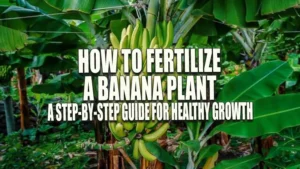
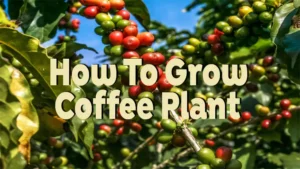


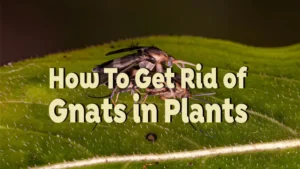
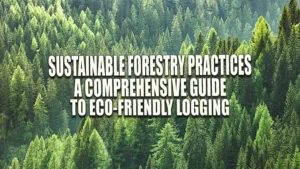
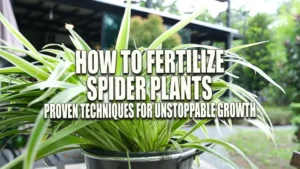
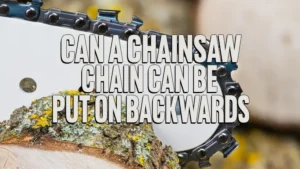
Article very helpful to me.Im a beginner.
Tina
March 4, 2024 7:26 am